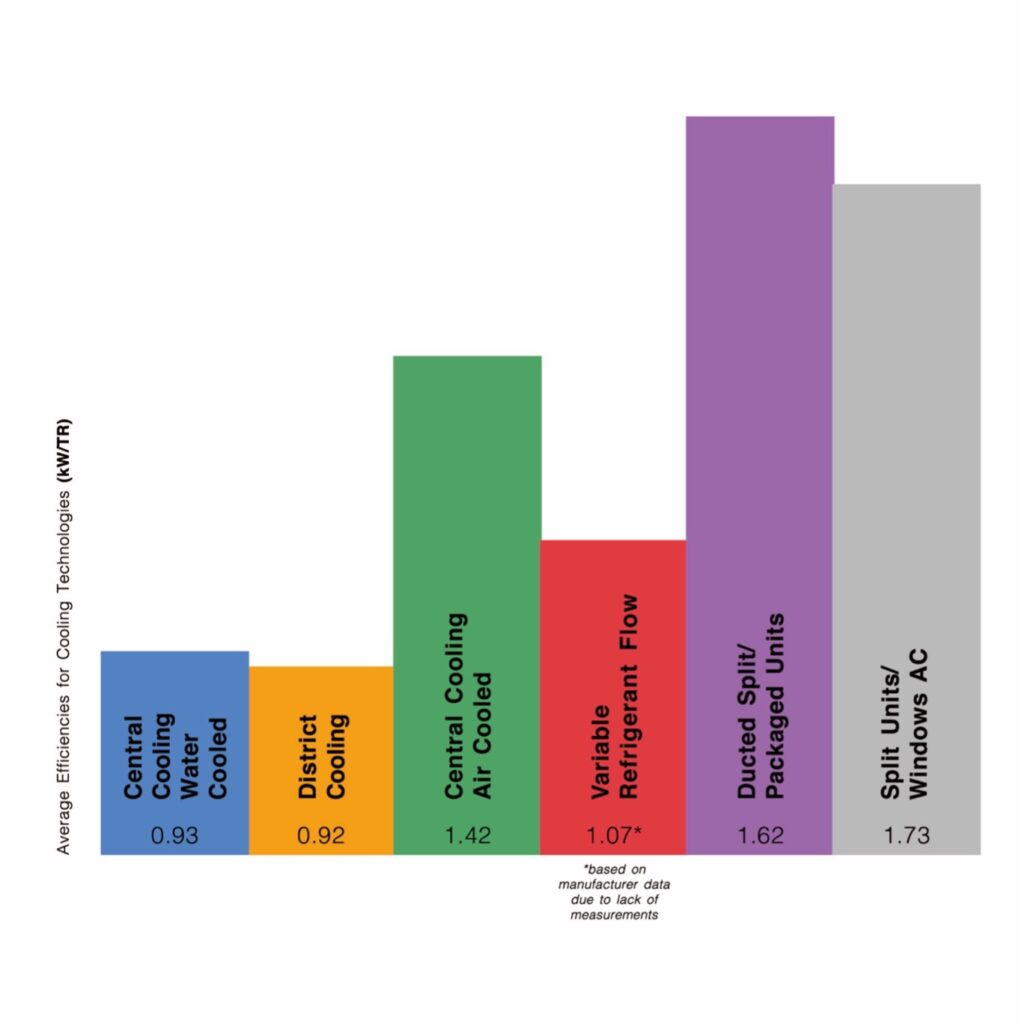Consultants, across expertise spanning design, retrofitting, innovation and collaboration, are uniquely positioned to positively impact the transformation needed to achieve the ambitious targets of the Pledge, says Omnia Halawani
Given the indispensable role of cooling in sustainable development, alongside its substantial energy consumption, targeting this sector for energy use reductions and emissions mitigation is a logical and strategic choice. The critical importance of cooling for maintaining food safety, medical supply integrity, and comfortable living and working environments underscores its non-negotiable part in society. Combining its indispensability with the high energy demand associated with cooling technologies, signifies a considerable opportunity for environmental gains through efficiency improvements. This dual perspective renders the cooling sector a straightforward choice for exerting collaborative efforts to reduce energy consumption and curb emissions. Stemming from this recognition, the COP28 UAE presidency spearheaded a Global Cooling Pledge in collaboration with the Cool Coalition of the United Nations Environment Program as a delivery partner.
The Global Cooling Pledge is a voluntary pledge that intends to “raise ambition and international cooperation through collective targets on improving energy efficiency and climate friendly approaches, while increasing access to sustainable cooling for the most vulnerable”. It targets climate-warming emissions from cooling stemming from air conditioning as well as refrigeration for food and medicine.
As a summary, the 63 countries that signed the pledge committed to reduce, by 2050, their cooling-related emissions by at least 68% compared to 2022 levels, to increase access to sustainable cooling by 2030, and to increase the global average efficiency of new air conditioning equipment by 50%. These commitments are part of a broader set of objectives that include the implementation of minimum energy performance standards by 2030, marking a significant step towards mitigating climate change impacts through targeted actions in the cooling sector.
The construction industry globally is pivotal in advancing the goals of the Global Cooling Pledge via the enhancement of the cooling technologies and installations in new and existing buildings.
On a governmental level, national Demand Side Management strategies intend to tackle and accelerate the delivery of energy efficiency targets. With cooling being major energy users in our region, any strategy intended to tackle energy efficiency must tackle cooling as a vital consumer. Increasing cooling efficiency is possible via multiple programmes that can tackle cooling from different angles and aspects: Buildings codes, existing building retrofits, equipment efficiencies, and the promotion of more efficient cooling technologies like District Cooling.

In a market study conducted for the Dubai Regulatory and Supervisory Bureau (Dubai RSB), grfn studied the in-situ efficiencies of different cooling technologies. The study was carried out through on-site testing to capture the actual performance, incorporating factors like the systems’ age and maintenance routines into the evaluation. Data was collected over an extended period, factoring in different weather conditions, to establish the yearly average efficiencies of each technology. The Dubai RSB reports that the weighted average efficiency of cooling systems (other than District Cooling) was assessed to be 1.51 kW/TR, whilst District Cooling efficiency calculated from data provided to the RSB by District Cooling firms is 0.92 kW/TR. From the date of the study (2016), it has been observed from several District Cooling plants that grfn designed or managed energy efficiency retrofits on, that improved efficiencies are achievable even beyond the reported District Cooling efficiencies in the study.

Given these insights, it becomes evident that stakeholders in the construction and urban planning sectors should champion the adoption of District Cooling solutions, wherever practical and feasible. The demonstrably higher efficiency of District Cooling not only underscores its viability as a sustainable option but also highlights its potential in contributing to the broader objectives of energy conservation and emissions reduction. In scenarii where District Cooling may not be a viable option, it is incumbent upon designers to advocate for and implement the most efficient alternative cooling technologies available. This dual approach ensures that regardless of the specific constraints or opportunities presented by a project, the overarching goal remains the pursuit of optimal energy efficiency and environmental stewardship in cooling solutions.
Consultants can channel their expertise into four verticals to support the targets of the Global Cooling Pledge.
First, and as a primary role for consultants, it is vital to influence the early stages of construction by incorporating design measures that focus on sustainability, energy efficiency, the integration of innovative technologies and the specifying of heightened efficiency requirements for cooling technologies in the tender documents of projects. Through designs, consultants can advocate passive strategies to reduce cooling demands and the dependency on mechanical cooling. This is further tackled through optimising mechanical cooling, which requires an approach that encompasses the right sizing of the demand load, tackling the energy efficiency of the cooling technology, the selection of eco-friendly refrigerants with low Global Warming Potential (GWP), and implementing design measures to improve the overall operational energy use efficiency of the installed systems, like advanced controls, heat recovery, demand control ventilation and thermal energy storage systems, among a plethora of possible options.
A second role for consultants is the advocacy of improving the existing building stock through energy audits and retrofits. Retrofitting older AC systems with more efficient models is normally the most rewarding and quite straightforward energy conservation measure that can be sought. With air conditioning using the major component of energy use in buildings, retrofitting inefficient installations with more efficient counterparts results in attractive energy bill reductions and the by-product reduction in emissions. This aligns with the goal of increasing access to sustainable cooling by enhancing the performance of existing installations.
A third role is the accelerator role for driving innovation and advancement in AC technologies. By specifying high-efficiency equipment in their projects, consultants can influence market trends and encourage manufacturers to prioritise the development of more sustainable products. In addition, the consultants’ involvement in R&D collaborations can support the advancement of AC technologies. This partnership should aim to ensuring that new products meet the evolving needs of sustainable construction and contribute to the global effort to reduce energy consumption and greenhouse gas emissions.
The fourth role is a collaborative role with governmental, non-governmental and regulatory/ standardising entities that is built on advocacy and education initiatives. Engaging in such partnerships and collaborative efforts can amplify the impact of the contribution of the construction industry to the Global Cooling Pledge. Consultants can serve as advisors, aiding in the development and updating of international standards and national building codes that emphasise cooling efficiency. By advocating for the inclusion of minimum energy performance standards (MEPS) and renewable energy-based cooling solutions in regulatory frameworks, consultants can drive systemic changes that support sustainable cooling practices.
Consultants, across expertise spanning design, retrofitting, innovation and collaboration, are uniquely positioned to positively impact the transformation needed to achieve the ambitious targets of the Global Cooling Pledge. Our role extends to leading education and raising awareness among all stakeholders, including contractors and building owners. This is vital to ensuring the widespread adoption of best practices and creating a culture where sustainable cooling is not just a goal but a standard practice. The construction industry, as a whole, can significantly contribute to reducing energy consumption and emissions, moving us closer to the sustainable future envisioned in the Global Cooling Pledge and getting us on a pathway consistent with the overarching target as the Paris Agreement goal of limiting global average temperature rise to 1.5 degrees C.
Copyright © 2006-2025 - CPI Industry. All rights reserved.